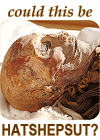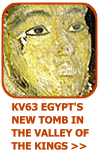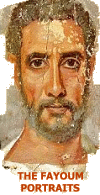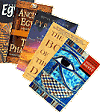|
|
||||||||||||||||||||||||||||||||||||||||||||||||||||||||||||||||||||||||||||||||||||||||||||||||||||||||||||||||||||||||
|
|
hieroglyphs - page1 | hieroglyphs - page 2 Hieroglyphs can be logograms, phonograms or determinatives, the symbols representing both ideograms and phonetic values. Translating hieroglyphs therefore is not as straightforward as a=the symbol for an eagle.
Pronunciation problems One of the most difficult aspects of pronouncing a section of hieroglyphic text is that there were no vowels in the written form of the Ancient Egyptian language, only consonants. The study of the Coptic language, a direct descendant of Ancient Egyptian, as well as surviving translations of Egyptian words in the languages of Assyrian, Babylonian and Greek has enabled the vocalisation of many Ancient Egyptian words to be partially reconstructed. The easiest conventional method of making Ancient Egyptian words pronounceable is to read the signs and insert a letter "e" wherever necessary. For instance, the word "s" becomes "se", the word "pr" becomes "per" and the word "nfr" becomes "nefer". Translation of 1-Consonant signs Transliterations of words are generally arranged basically according to the following values which are assigned to the Egyptian letters or phonetic symbols:
Although a total of over 6000 hieroglyphic signs have been identified, the majority of these were introduced during the Ptolemaic and Roman periods. Prior to this, during the main Pharaonic era of Egyptian history, fewer than a thousand symbols are actually attested, with an even smaller number being in regular use. With a nucleus of frequent basic signs, others were simply invented as they became necessary. Enrol on our easy to learn hieroglyph course and learn the secrets of the ancient Egyptians >>
|
|||||||||||||||||||||||||||||||||||||||||||||||||||||||||||||||||||||||||||||||||||||||||||||||||||||||||||||||||||||||

|
||||||||||||||||||||||||||||||||||||||||||||||||||||||||||||||||||||||||||||||||||||||||||||||||||||||||||||||||||||||||
|
||||||||||||||||||||||||||||||||||||||||||||||||||||||||||||||||||||||||||||||||||||||||||||||||||||||||||||||||||||||||


















